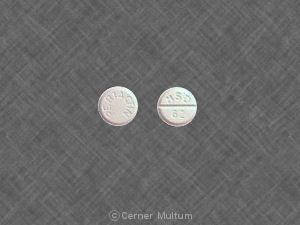Periactin Disease Interactions
There are 4 disease interactions with Periactin (cyproheptadine).
Antihistamines (applies to Periactin) anticholinergic effects
Moderate Potential Hazard, Moderate plausibility. Applicable conditions: Gastrointestinal Obstruction, Glaucoma/Intraocular Hypertension, Urinary Retention
Antihistamines often have anticholinergic activity, to which elderly patients are particularly sensitive. Therapy with antihistamines should be administered cautiously, if at all, in patients with preexisting conditions that are likely to be exacerbated by anticholinergic activity, such as urinary retention or obstruction; angle-closure glaucoma, untreated intraocular hypertension, or uncontrolled primary open-angle glaucoma; and gastrointestinal obstructive disorders. Conventional, first-generation antihistamines such as the ethanolamines (bromodiphenhydramine, carbinoxamine, clemastine, dimenhydrinate, diphenhydramine, doxylamine, phenyltoloxamine) tend to exhibit substantial anticholinergic effects. In contrast, the newer, relatively nonsedating antihistamines (e.g., cetirizine, fexofenadine, loratadine) reportedly have low to minimal anticholinergic activity at normally recommended dosages and may be appropriate alternatives.
Antihistamines (applies to Periactin) asthma/COPD
Moderate Potential Hazard, Moderate plausibility. Applicable conditions: Chronic Obstructive Pulmonary Disease
It has been suggested that the anticholinergic effect of antihistamines may reduce the volume and cause thickening of bronchial secretions, resulting in obstruction of respiratory tract. Some manufacturers and clinicians recommend that therapy with antihistamines be administered cautiously in patients with asthma or chronic obstructive pulmonary disease.
Antihistamines (applies to Periactin) cardiovascular
Moderate Potential Hazard, Moderate plausibility. Applicable conditions: Cardiovascular Disease, Hyperthyroidism, Hypotension
Antihistamines may infrequently cause cardiovascular adverse effects related to their anticholinergic and local anesthetic (quinidine-like) activities. Tachycardia, palpitation, ECG changes, arrhythmias, hypotension, and hypertension have been reported. Although these effects are uncommon and usually limited to overdosage situations, the manufacturers and some clinicians recommend that therapy with antihistamines be administered cautiously in patients with cardiovascular disease, hypertension, and/or hyperthyroidism.
Antihistamines (applies to Periactin) renal/liver disease
Moderate Potential Hazard, High plausibility. Applicable conditions: Renal Dysfunction
Limited pharmacokinetic data are available for the older, first-generation antihistamines. Many appear to be primarily metabolized by the liver, and both parent drugs and metabolites are excreted in the urine. Patients with renal and/or liver disease may be at greater risk for adverse effects from antihistamines due to drug and metabolite accumulation. Therapy with antihistamines should be administered cautiously in such patients. Lower initial dosages may be appropriate.
Switch to professional interaction data
Periactin drug interactions
There are 328 drug interactions with Periactin (cyproheptadine).
Periactin alcohol/food interactions
There is 1 alcohol/food interaction with Periactin (cyproheptadine).
More about Periactin (cyproheptadine)
- Check interactions
- Compare alternatives
- Reviews (65)
- Drug images
- Side effects
- Dosage information
- During pregnancy
- Drug class: antihistamines
- Breastfeeding
Related treatment guides
Drug Interaction Classification
| Highly clinically significant. Avoid combinations; the risk of the interaction outweighs the benefit. | |
| Moderately clinically significant. Usually avoid combinations; use it only under special circumstances. | |
| Minimally clinically significant. Minimize risk; assess risk and consider an alternative drug, take steps to circumvent the interaction risk and/or institute a monitoring plan. | |
| No interaction information available. |
See also:
Further information
Always consult your healthcare provider to ensure the information displayed on this page applies to your personal circumstances.


